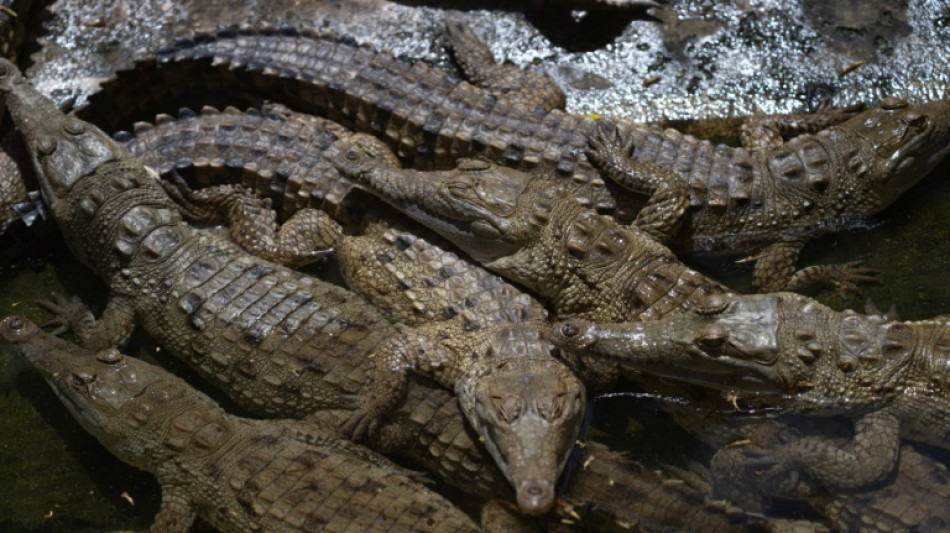
-
 India bank on formidable home Test record in South Africa series
India bank on formidable home Test record in South Africa series
-
Australia's Hazlewood in injury scare ahead of first Ashes Test

-
 No ordinary Joe: Stokes backs Root to fire in Australia
No ordinary Joe: Stokes backs Root to fire in Australia
-
Humans can no longer tell AI music from the real thing: survey

-
 House vote likely Wednesday on ending US government shutdown
House vote likely Wednesday on ending US government shutdown
-
Sixers edge Celtics while Thunder reach NBA-best 11-1

-
 Cambodia's Prince Group denies link to scams after asset seizures
Cambodia's Prince Group denies link to scams after asset seizures
-
Stokes bats away criticism of England's Ashes preparations

-
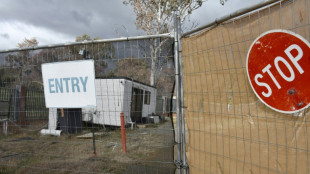 Russia loses legal bid to build embassy next to Australian parliament
Russia loses legal bid to build embassy next to Australian parliament
-
Ethiopia's invasive prosopis tree chokes livelihoods and land

-
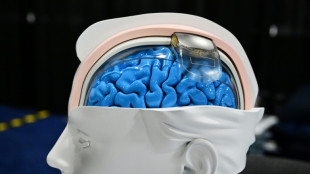 'We're already living in science fiction': The neurotech revolution
'We're already living in science fiction': The neurotech revolution
-
Ousted Gabon leader's wife and son sentenced to 20 years for graft

-
 Asian markets up on hopes over shutdown deal, rate cut
Asian markets up on hopes over shutdown deal, rate cut
-
Bangladesh's liquor industry a surprising success
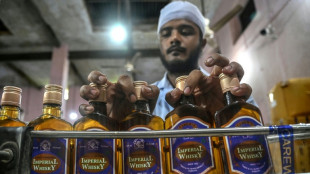
-
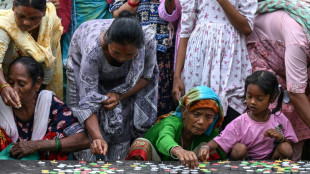 Nepal's war victims watch political changes with fragile hope
Nepal's war victims watch political changes with fragile hope
-
France aim to secure World Cup place as Paris marks attacks anniversary

-
 Russia jails teen musician over anti-war street songs for third time
Russia jails teen musician over anti-war street songs for third time
-
Demand for air con set to triple by 2050, warns UN
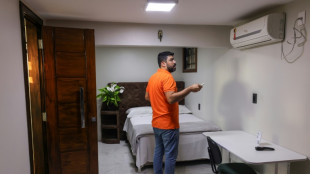
-
 Trump claims 'very big victory' as shutdown vote nears
Trump claims 'very big victory' as shutdown vote nears
-
Indigenous protesters clash with security at COP30 summit in Brazil

-
 France warns over Caribbean 'instability' as G7 talks open
France warns over Caribbean 'instability' as G7 talks open
-
Brazil tries to avoid climate bust up at COP30 summit

-
 Ethiopia set to host UN's 2027 climate summit, 2026 undecided
Ethiopia set to host UN's 2027 climate summit, 2026 undecided
-
Close Zelensky ally accused of orchestrating major graft scheme

-
 'Trump is temporary': California governor Newsom seizes COP30 spotlight
'Trump is temporary': California governor Newsom seizes COP30 spotlight
-
US stocks end mostly higher despite drop in Nvidia

-
 Arrival of US aircraft carrier fuels Venezuelan fears of attack
Arrival of US aircraft carrier fuels Venezuelan fears of attack
-
Iraqi voters turn out in numbers as region watches on

-
 Pakistan upstage Sri Lanka in first ODI as Agha and Rauf shine
Pakistan upstage Sri Lanka in first ODI as Agha and Rauf shine
-
Macron warns any planned West Bank annexation a 'red line'

-
 BBC must fight, says outgoing chief as Trump threatens to sue
BBC must fight, says outgoing chief as Trump threatens to sue
-
UN aid chief hails talks with Sudan army leader
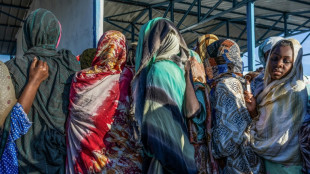
-
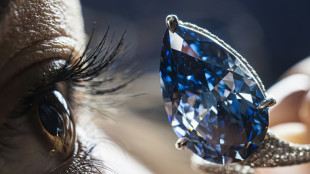 Mellon Blue diamond sells for $25.6 million
Mellon Blue diamond sells for $25.6 million
-
Google unveils $6.4 bn investment in Germany

-
 US aircraft carrier in Latin America fuels Venezuelan fears of attack
US aircraft carrier in Latin America fuels Venezuelan fears of attack
-
For many Syrians, Sharaa's US visit marks new beginning

-
 Monumental art displayed in shade of Egypt's pyramids
Monumental art displayed in shade of Egypt's pyramids
-
Stocks mixed as tech titans struggle

-
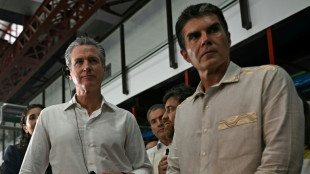 California governor Newsom slams Trump at COP30
California governor Newsom slams Trump at COP30
-
Alcaraz fights back to beat Fritz at ATP Finals

-
 Russia offers US nuclear talks in bid to ease tensions
Russia offers US nuclear talks in bid to ease tensions
-
Turkey seeks more than 2,000 years behind bars for Erdogan rival

-
 UK court jails Chinese bitcoin fraudster for over 11 years
UK court jails Chinese bitcoin fraudster for over 11 years
-
Fanfare as Guinea launches enormous Simandou iron ore mine
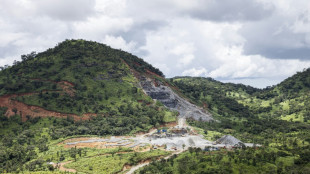
-
 Iraqis vote in general election at crucial regional moment
Iraqis vote in general election at crucial regional moment
-
Shock follows carnage after suicide bombing in Islamabad

-
 Ford returns to pull England strings against All Blacks
Ford returns to pull England strings against All Blacks
-
Stocks mixed as end to US shutdown appears closer

-
 BBC must 'fight' for its journalism, outgoing chief says amid Trump lawsuit threat
BBC must 'fight' for its journalism, outgoing chief says amid Trump lawsuit threat
-
Atalanta turn to Palladino after Juric sacking


Fighting to save Venezuela's Orinoco Crocodile
Venezuela's Orinoco Crocodile is a fearsome beast, but its enormous size and sharp teeth were no match for humans who hunted them to the brink of extinction.
Millions were slaughtered in the 20th century, mainly for their skins, and today, only about 100 adult females are left in Venezuela, according to the country's Fudeci natural sciences foundation.
Known to scientists as Crocodylus intermedius, the enormous reptile is native to the Orinoco basin that Venezuela shares with Colombia.
It can grow to more than six meters (19.7 feet) in length and over 400 kilograms (882 pounds), making it one of the largest crocodiles in the world.
According to the International Union for Conservation of Nature, it is critically endangered, having suffered an 80-percent population reduction in just three generations in the early and mid-1900s.
More than 2.5 million Orinoco Crocodile skins were exported from Venezuela from 1931 to 1934, according to official Venezuelan figures.
Today, such trade is prohibited but the threat persists: the crocs are killed for their eggs and meat, and sometimes out of fear. And their habitat is ever shrinking and defiled by pollution.
Efforts that started in 1990 to breed new crocs in captivity have seen some 10,000 freed back into the Venezuelan wild.
But their numbers have not significantly increased.
"We do a part... to raise the animals and then release them, but after that it no longer depends on us, there has to be protection of these animals, surveillance, control, there has to be environmental education," conservationist Federico Pantin told AFP.
Pantin, 56, manages the Leslie Pantin breeding zoo -- named after his father who founded it -- with his wife Tuenade Hernandez in the northern state of Aragua. It is one of several croc breeding centers in the country.
- 'Seeds of conservation' -
On Sunday, Pantin was on hand for the release of 160 hatchlings -- small and green-skinned with black spots and light eyes -- into the Capanaparo River.
The zoo's captive breeding pair produces about 40 eggs at a time.
The eggs are incubated for about 90 days in very specific conditions, buried in sand at a depth of 33 centimeters, at a temperature of between 30 and 34 degrees Celsius (86-93 degrees Fahrenheit) and humidity of 85-90 percent.
The crocodiles mostly hatch in May, and at about one year of age, they are freed.
Zoo staff also capture free-born baby crocs in the river to raise them in relative safety.
"Predation in the natural environment is very high" with birds, fish and other reptiles all feeding on the defenseless hatchlings, explained Pantin.
By raising them at the zoo, 95 percent of the hatchlings survive -- whereas most would have died in their natural environment.
"The animals arrive here about 24 centimeters (9.4 inches) long and weighing about 80 or 100 grams (2.8-3.5 ounces)... we release them when they reach about 80 or 90 centimeters and weigh four kilos," said Pantin.
According to Diego Bilbao, director of a company called Rio Verde which organizes tours to witness the annual release of young crocs, the sector holds potential for tourism income with a conservational side benefit.
If locals and Indigenous communities can be convinced to see the crocs as a source of income, he explained, "they help protect it."
The Pantin Zoo, which also works to conserve other threatened species such as the Red Siskin finch, the stubfoot toad and the wood turtle, also seeks to instill a natural stewardship mindset in visiting school groups.
"I love it," said Hernandez of this part of her job. "The seeds of conservation are sown at a young age."
S.Gregor--AMWN

